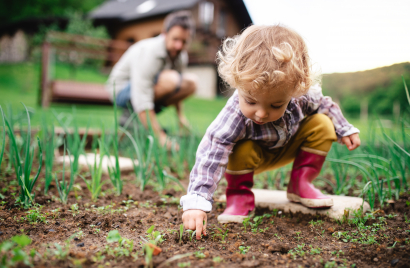
Virgin Media O2 launches summer online safety campaign
Virgin Media O2 and Internet Matters spotlight the importance of having conversations about online safety and starting them early

Dr Rebecca Swift, Global Head of Creative Insights at Getty Images explores the growth in the need for empathetic, compassionate stock imagery, particularly during such turbulent times.

It’s been a tumultuous few weeks to say the least. COVID-19 has altered every facet of how we work, live, and relate to our loved ones. The term ‘unprecedented’ is getting thrown around quite a bit, with good reason. The world’s biggest cities have effectively shut down as people work remotely and indefinitely. School and sports are cancelled. People aren’t gathering with friends and family for celebrations, so technology is playing a more important role in our lives. It has enabled global home schooling and working remotely. Platforms such as Zoom have, in many ways, improved communications amongst colleagues, friends and families. Along with “togetherness”, a new significant search trend we’ve seen at Getty Images is “virtual connection”, something everyone is dealing with.
Collectively, we have also retreated into storytelling and escapism while in lockdown. Global Web Index findings from last month reveal that 95% of consumers have increased the time spent watching TV, streaming content, interacting with social media and gaming. Theatres, comedians, galleries, museums and music artists have also reacted quickly to the new modes of communicating and entertaining audiences with live streaming and virtual experiences becoming widespread.
The impact of social distancing has reverberated across industries, including the advertising, brand and creative industries and is something we have to bear in mind when creating editorial and marketing content. Those of us working in these industries are already familiar with the power of imagery to tell stories, and impact people’s emotions. Yet, brands and content creators find themselves in uncharted waters. How do you reach people whose lifestyles have been dramatically changed, for an unknown period of time?
Collectively, we have retreated into storytelling and escapism while in lockdown.
Dr Rebecca Swift
In this time of isolation, brands are taking a step back from marketing and looking at how they can add value through the content they create. This is the time to strip everything away and think deeply about not only the brand’s core values but adding value to people’s lives while remaining sensitive to the situation at hand.
It’s important for brands to tell stories accurately and responsibly, with visuals which forge connections and reflect our new reality. That means images of large social gatherings or, sadly, grandparents visiting with their grandchildren (a la the Cadbury’s pulled advert) are out. Similarly, perhaps this isn’t the time for celebrities and other brand influencers to lament their mansion-house lockdown, when the majority of people around the world are cramped into flats and houses that feel all too small with the entire family afoot. Relatability and realness are more important than ever right now.
Instead, brands can take this opportunity to think sensitively and reimagine how we can do things differently and take inspiration from them. For example, Nike’s ‘You Can’t Stop Us’ spot, a 60-second video developed using images of both athletes and real people working out in small spaces in their homes, inspires people everywhere to keep healthy and not give up on their fitness goals. It taps into the zeitgeist and connecting to the universal desire for fitness and wellbeing in isolation. Facebook also focuses on human connections and how we help one another, highlighting the everyday heroes who are keeping daily life ticking along during this crucial time in its ‘Never Lost’ video.
Emotion, compassion and truth are part of transparent brand communication in the future.
Dr Rebecca Swift
Image galleries that reimagine how we see holidays, friendships, neighbour relationships, work, school and all the other areas of life impacted by this pandemic are useful in supporting editorial content responsibly. It would be irresponsible for a publisher to issue an article about social distancing accompanied by an image showing a group gathering. Here, content creators can help by providing appropriate imagery.
As we move through this crisis, connecting will continue to grow as a unifying theme. We feel connected more than ever, despite being necessarily disconnected. Entwined in the need for connection and community is the need to see brands acting in a similar manner.
Since the COVID-19 outbreak, 55% of consumers are already moving to brands they can trust, according to Edelman’s Trust Barometer 2020. Recent findings from Kantar have found that consumers expect brands to be genuine and for companies to prioritise their staff welfare and flexible working. We want business to not only care about us as customers but to care about staff and suppliers too. This will likely increase our expectation that brands not only offer solutions to our current needs but also that emotion, compassion and truth are part of transparent brand communication in the future.


As Senior Vice President, Creative Content, at Getty Images, Dr Rebecca Swift directs the company’s creative insights and creation of imagery and video used in award-winning advertising, design and editorial around the world. Working closely with creators, art directors and creative researchers globally, Rebecca plays a critical role in ensuring that Getty Images is continually providing fresh, relevant creative content and insights, which in turn engages and inspires creatives and marketers around the world. Her foresight into cultural and societal trends that shape visual communications drives Getty Images’ creative offering. Rebecca joined the photography industry over 20 years ago and was one of the founding members of the creative research team at Getty Images, introducing visual research methodology to the industry. Rebecca has a PhD in Photography. Her research expertise is in commercial creativity and the evolution of visual trends in advertising.
Looks like you need to create a Creativebrief account to perform this action.
Create account Sign inLooks like you need to create a Creativebrief account to perform this action.
Create account Sign in